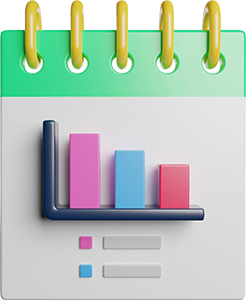
Which forthcoming events, in your opinion, will most likely move the market? How the market is affected by a bullish or negative trend, and when it is likely to set
There is only one solution for all of these: The Forex Calendar can be used to identify the most likely future market trends.
When it comes to trading, decision-making is crucial. The only way to achieve projected returns on investments is to make the right decisions by establishing appropriate trading goals and selecting appropriate financial instruments. This is only achievable if you understand what influences the market, when to trade, and when to abandon a position.
The CribFX Economic Calendar will help you find the precise market information you’re looking for. It will direct you and give you the details you need about the impending events that will move the market through pre-scheduled news or official reports on economic indicators that have an impact on the whole financial market. This will assist you in determining the best moment to invest in order to generate strong returns, as economic indicators track a variety of economic events that frequently cause fluctuations in the market. You will find it easy to determine the timing of these impending events and modify your trading methods accordingly, as the market reacts to global economic events quite quickly.
You will undoubtedly benefit from the CribFX Economic Calendar since both bullish and bearish markets offer opportunities; all you need to do is determine which is more likely to occur and what kind of adjustments it might entail.

Economic Calendar Indicators
Consistently using the CribFX Economic Calendar can help you stay ahead of significant market swings by allowing you to conveniently track the release schedule of major economic indicators. Right now, the most important thing you need to comprehend is how prices move throughout these kinds of occurrences, and the Economic Indicator is your only source of information for all of this. By monitoring economic indicators such as GDP, employment strength, and inflation, you can simply predict the trading market and identify possible trading opportunities at favorable times.
The following is a list of the most significant economic indicators mentioned:
Consumer Confidence Index
The Consumer Confidence Index calculates the average level of consumer confidence and their purchasing power; a decline in this index indicates a failing economy.
Consumer Price Index (CPI)
The Consumer Price Index tracks changes in the costs of consumer goods and services and is used to calculate inflation. The Consumer Price Index provides information on price increases across more than 200 categories.
Durable Goods Orders
Every month, a crucial metric for predicting prospective manufacturing endeavors is unveiled: it represents fresh orders placed with domestic producers for the forthcoming supply of durable goods.
Employment Cost Index (ECI)
Employment Cost Index is the one that shows the rise and fall in employment costs. It is a toll which measures inflation in series, employer-paid benefits and wages in the US.
Gross Domestic Product (GDP)
The Gross Domestic Product (GDP) is a measure of a nation’s economic growth. It is also a measure of an individual’s living standard because it represents the market value of all commodities and services produced in a nation over a given time period.
Gross Domestic Product Deflator
The Gross Domestic Product Deflator, which distinguishes between nominal and real GDP, calculates the prices of all products and services.
Industrial Production (IP)
Industrial production, which is a measure of changes in output in any industrial sector, is a good way to determine a nation’s industrial capacity.
Industrial Production and Capacity Utilization (IPCU)
IPCU is used to calculate the economic activity for each month and displays all of the data from the preceding month. IPCU promotes purchasing and selling across a wide range of industries.
International Trade (trade balance)
In order to differentiate between the imports and exports of all goods and services, or to know the changes in imports as well as exports, International Trade is used as this measures the difference and changes also indicates market trends.
Institute of Economic Research (IFO)
Production, distribution, and consumption of all commodities and services are identified and examined through this type of research, also known as a company survey.
National Association of Purchasing Manager Index (NAPM)
The manufacturing sector in particular and the economy as a whole are measured using NAPM. It is used to compute employment, production, and any new order data.
Non-farm Payroll Employment
It indicates the present scenario of complete US companies and also forecasts the future levels of economic activities in the market.
Producer Price Index (PPI)
The Producer Price Index is a metric used to assess variations in the selling prices domestic producers of mining, manufacturing, agriculture, and power receive.
Purchasing Managers Index (PMI)
The purpose of the Purchasing Managers Index is to track historical economic developments, particularly in the manufacturing and service industries. It displays the state of the market: increasing, staying the same, shrinking.
Retail Sales
Retail sales are an indicator that counts all of the money that consumers spend, and it’s a great way to learn about the state of the economy and forecast general consumer spending trends.
Tankan (Short-period Economy Observation)
The Bank of Japan conducts this quarterly business survey, which has an impact on equities and exchange rates. It is regarded as a significant financial indicator in Japan as well.
Unemployment Rate
An indicator of a nation’s unemployment rate is its unemployment rate. It is determined by dividing the number of unemployed people who are able, willing, and able to work by the total number of people employed. It also aids in predicting future monetary policy and interest rates.







